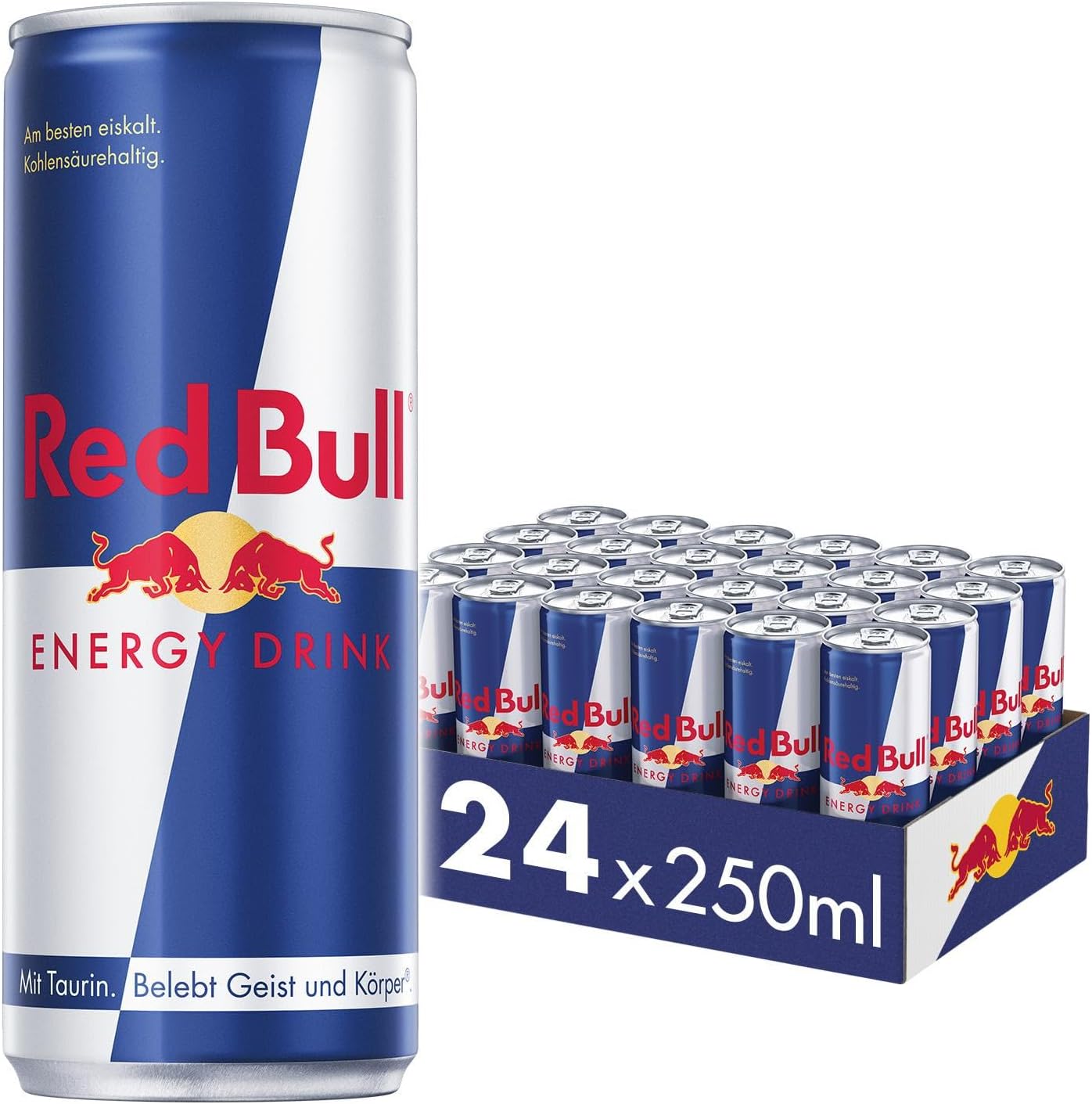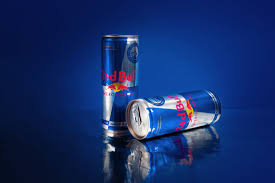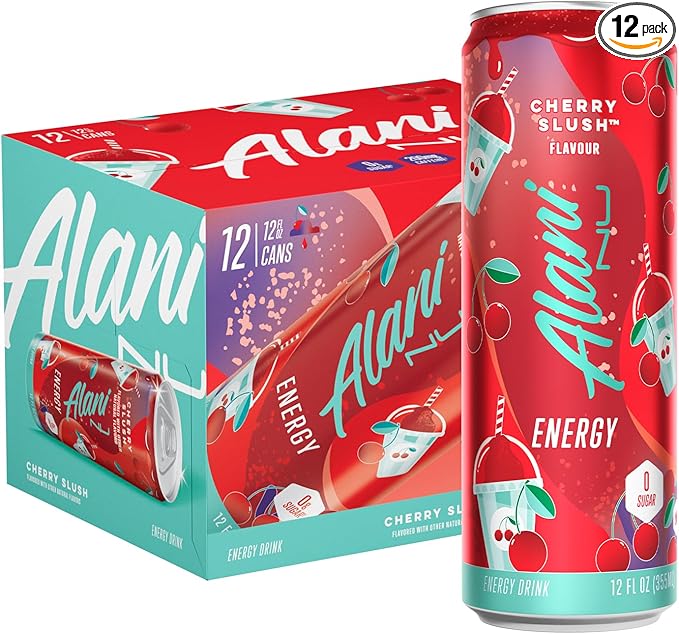Description
Introduction
Launched in Austria in 1987, RedBull Energy Drink 250 ml has grown into one of the world’s most-recognized energy-drink brands. The 250 ml can is often treated as the “classic” serving size in many markets, and because of its ubiquitous presence it’s worth analyzing in depth: what are its specifications, what it contains, how it works, and what potential benefits (and caveats) it offers globally.
In this article we’ll cover:
-
Product specifications of the 250 ml version
-
Ingredient breakdown and nutritional values
-
How those ingredients are claimed to function (benefits)
-
Global availability and use cases
-
Considerations and cautions
-
Conclusion
1. Product Specifications of the RedBull Energy Drink 250 ml Can
Volume & Format
The standard version of RedBull Energy Drink 250 ml in many markets comes in a 250 ml aluminum can.
For example, nutritional data is often provided per 100 ml and then by extension for the full 250 ml can.
Packaging & Sustainability
-
The can is made of 100% recyclable aluminum according to Red Bull’s product information.
-
In some product datasheets one sees packaging‐details: for example for Austria origin: “250 ml Dose” with full recyclable can description.
-
Storage instructions: keep in a cool, dry place. (e.g., one listing shows “Storage Instructions: Cool and dry conditions” for 250ml Austria origin)
Serving & Usage Suggestions
-
The brand message: “Vitalizes body and mind”.
-
On the Q&A page the brand states: “A 250 ml can of RedBull Energy Drink gives you ‘wings’ whenever you need them.”
-
Recommended to serve chilled: many product listings include “Serve chilled” or “Best served cold”.
Key Numeric Specification Excerpts
-
Caffeine: One 250 ml can contains approx. 80 mg of caffeine (varies slightly by market).
-
Per 100 ml nutritional data (typical) for the sugared version: energy ~195 kJ (46 kcal); Carbohydrates ~11 g (all sugars) per 100 ml; salt ~0.1 g.
-
Ingredients list: water, sucrose, glucose, citric acid, carbonation (CO₂), taurine (0.4 %), acidity regulators (sodium & magnesium carbonates), caffeine (0.03 %), vitamins (niacin, pantothenic acid, B6, B12), flavorings, colors (plain caramel, riboflavin’s).
2. Ingredient Breakdown & Nutritional Values
Let’s look more carefully at the major components of the 250 ml can, why they are included, and what the typical nutritional values are.
Major Ingredients
-
Caffeine: A stimulant; the can contains around 80 mg (in many markets) for the 250 ml size.
-
Taurine: An amino acid naturally found in the body, included in the formula at ~0.4 %.
-
B-group Vitamins: Including niacin (Vit B3), pantothenic acid (B5), vitamin B6, vitamin B12—all included in the formula.
-
Sugars / Carbohydrates: In the sugared version, significant carbs from sucrose and glucose. For example 11 g sugars per 100 ml in many markets.
-
Water & Carbonation: The base of the beverage is carbonated water.
-
Other Ingredients: Acidity regulators, flavorings, colors.
Nutritional Values (Sugared Version)
Based on listings for 100 ml and extrapolated to full can:
-
Energy: ~46 kcal per 100 ml → for 250 ml that gives about ~115 kcal.
-
Carbohydrates: ~11 g per 100 ml → ~27.5 g per 250 ml. (Some listings give 27 g for 250 ml)
-
Fat: 0 g
-
Protein: 0 g
-
Salt: ~0.1 g per 100ml, so about 0.25 g for full can.
-
Vitamins: e.g., Niacin: 8 mg per 100 ml (~50% NRV) → ~20 mg per 250 ml in some markets. Vit B6: 2 mg per 100ml (~143% NRV) → ~5 mg per 250ml. Vit B12: 2 µg per 100ml (~80% NRV) → ~5 µg per 250ml.
Summary Table (Approximate for 250 ml, sugared version)
| Component | Approximate for 250 ml |
|---|---|
| Caffeine | ~80 mg |
| Energy | ~115 kcal |
| Carbohydrates (Sugars) | ~27–28 g |
| Fat | 0 g |
| Protein | 0 g |
| Salt | ~0.25 g |
| Niacin (B3) | ~20 mg (varies by market) |
| Vitamin B6 | ~5 mg |
| Vitamin B12 | ~5 µg |
3. How the Ingredients Claim to Deliver Benefits
The manufacturer and various listings highlight certain claimed benefits of the formula. It’s useful to look at what these are, how plausible they are, and their context.
What the Brand States
According to the official Q&A on Red Bull’s site:
-
“Caffeine helps to improve concentration and increase alertness.”
-
“B-group vitamins… contribute to the reduction of tiredness and fatigue.”
-
“Sugars… are an energy source for the body – including the brain and muscles.”
-
“Taurine … is involved in a range of processes including regulation of water/electrolyte balance at the cellular level.”
How These Work in Practice
-
Alertness & Focus via Caffeine
-
Caffeine in the 80 mg range can provide a modest stimulant effect—improved vigilance, quicker reaction time, reduced perception of fatigue.
-
The 250 ml can thus is marketed to people needing a mental or physical “boost” – e.g., athletes, students, professionals, travellers.
-
-
Energy Supply via Sugars and Carbs
-
The sugars provide readily available carbohydrate energy. The ~27 g of sugars in a can mean a fuel source for metabolism, especially when alertness or performance is needed.
-
For example, in a context of light physical activity or sustained concentration, this could assist.
-
-
Supportive Role via B-Vitamins
-
B-group vitamins (niacin, B6, B12, pantothenic acid) are involved in normal energy-yielding metabolism and reduction of tiredness and fatigue.
-
While the amounts are above daily reference values in many markets, they are not a “magic” by themselves—they support normal bodily function rather than dramatically boost energy by themselves.
-
-
Taurine’s Role
-
Taurine is a non-essential amino acid (in normal diet) involved in various cellular processes. The manufacturer cites its role in water/electrolyte balance.
-
The synergy of caffeine + taurine + B-vitamins + sugars is marketed as the Red Bull “formula”.
-
Real-world Benefits & Use-cases
-
Before or during physical or mental exertion: For example, when driving long distances, studying for exams, or doing shift‐work, the 250 ml can offers a compact volume with moderate caffeine and sugar.
-
Travel & irregular schedules: The brand references “highly demanding jobs”, “travelers on long journeys”.
-
Sporting or recreational activity: While not a sports drink per se, the brand positions itself in association with extreme sports, motorsports, events—where a quick form factor energy boost is desirable.
-
Because the can is relatively small (250 ml) compared to larger formats, it is convenient for on-the-go consumption without being overly large.
4. Global Availability and Use
Worldwide Presence
-
The 250 ml size is common in many countries. For example data sheets from Italy, UK, Poland show the 250 ml version.
-
Because of the global footprint of Red Bull, the product is available in supermarkets, convenience stores, vending machines, duty-free shops worldwide.
Market Variations
-
While many maintain the same core formula, small local variations may exist (flavor variants, sugar-free versions, packaging differences).
-
Example: In some countries you’ll find the “sugar-free” version of Red Bull 250 ml.
-
Note: The caffeine content may vary somewhat by country, regulatory environment.
“In the UK, its 32mg/100ml so a 250ml redbull will have 80mg”
Use in Different Regions
-
In Europe, 250 ml is a standard “small” energy drink size.
-
In other markets like Australia, North America, sometimes larger sizes are more common, but 250 ml remains a “compact” option.
-
The product is used by diverse consumer segments: university students pulling late nights, professionals with intensive schedules, athletes needing quick energy bursts, drivers needing alertness.
5. Considerations and Cautions
While the RedBull Energy Drink 250 ml can offers convenience and a functional formula, it is important to consider the potential health and usage implications.
Potential Concerns
-
Caffeine intake: While 80 mg is moderate, consumption of multiple cans or combining with other caffeine sources may lead to high total intake.
-
Sugar content: The sugared version has ~27 g of sugars per 250 ml can (based on ~11 g per 100 ml) – which is significant in terms of carbohydrate/sugar intake.
-
Acidic beverage: Some studies show that frequent consumption of energy drinks (including Red Bull) can erode tooth enamel due to acidity and sugars.
-
Overuse risks: Chronic excessive consumption of energy drinks has been linked to potential kidney or liver issues (via high amounts of B vitamins, caffeine, taurine) in some reviews.
-
Not for certain groups: The product labelling states “High caffeine content. Not recommended for children or pregnant or breast-feeding women.” (e.g., one UK listing)
Best Practice Use
-
Moderation: One 250 ml can can be appropriate in many usage scenarios; multiple cans in a short timeframe may raise risks.
-
Timing: Using the drink when alertness is required (e.g., before an exam, during long drive) rather than habitually may be more beneficial.
-
Hydration: Energy drinks should not replace plain water – especially in physical exertion settings.
-
Sugar-free alternative: For those who want the functional benefits without the sugar load, the sugar-free version exists.
-
Check your total caffeine/sugar intake: Especially if you have underlying health conditions (heart issues, diabetes, sensitivity to stimulants).
Balancing Benefits vs. Risks
It’s important to treat the RedBull Energy Drink 250 ml can as a functional beverage rather than a substitute for good sleep, nutrition, hydration, or rest. Its convenience and compact size make it attractive, but the fundamental lifestyle foundations (rest, healthy diet, hydration) matter more for sustained performance. The drink can help “bridge” a gap rather than fix a long-term deficit.
6. Conclusion
The Red Bull Energy Drink 250 ml can is a globally recognized product that offers a compact, convenient size with a well-established formula: moderate caffeine (~80 mg), taurine, B-group vitamins, sugars, and carbonation—all aimed at providing a quick boost of alertness and energy. Its specifications are consistent across many markets, and its marketing emphasizes versatile usage (study, work, travel, sport).
From a nutritional standpoint, it delivers energy via sugars, supports metabolism via B-vitamins, and enhances alertness via caffeine. Used appropriately, it can be an effective tool for moments when heightened focus or energy is needed. However, it’s crucial to use the product in context—not as a substitute for rest or healthy habits—and to be aware of sugar and caffeine intake, especially for sensitive populations.
For readers in Europe, the 250 ml version offers a familiar size and formula, aligning with the global standards of the brand. If you’re considering it for a specific purpose—e.g., studying, driving, working a late shift—it can be part of your toolkit, provided you incorporate moderation and good overall health practices.








Reviews
There are no reviews yet.